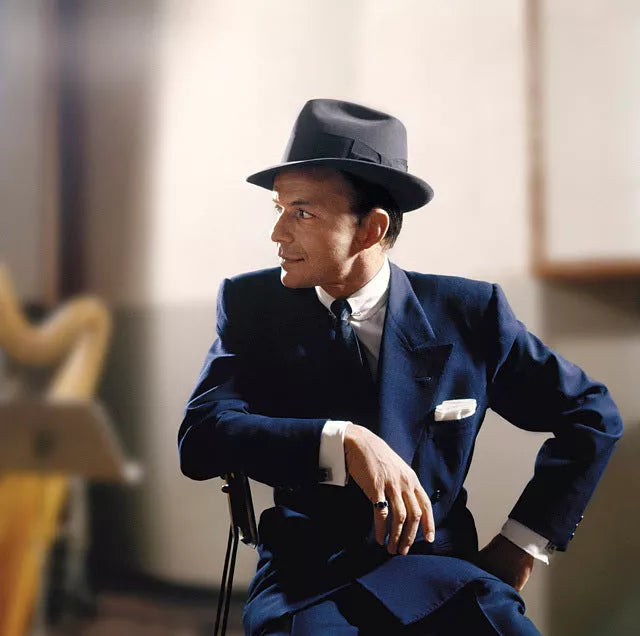
Laird Hatters Explores the Fedora Hat
Share
Laird Hatters Take on The Fedora
The Fedora is one of the most iconic styles in classic menswear. It's a timeless soft hat that has remained a staple for over a century. Traditionally associated with elegance, practicality, and understated charm, the Fedora rose to popularity in the early 20th century and has been worn by style icons, actors, and everyday gentlemen ever since.
Made from soft materials such as wool felt, fur felt, or occasionally animal hides, the Fedora is known for its pliable construction and sculpted shape. Though originally shaped by hand using wooden blocks and irons, modern Fedoras are now formed using metal moulds and machines that apply consistent pressure to shape the crown and brim.
Physical Features of the Fedora
The Fedora is easily recognisable by its creased crown — typically with a teardrop or centre dent — and a pinch at the front, giving it its signature silhouette. The crown is complemented by an angled brim, which can vary in width but is often turned down at the front and up at the back. Brims may be finished with a sewn edge or left raw, depending on the style.
A decorative band or ribbon is traditionally attached at the base of the crown, just above the brim, helping to define the hat’s overall shape. While men’s Fedoras tend to favour clean lines and classic colours with subtle styling, women’s versions often feature slimmer shapes and more elaborate adornments. Despite evolving with fashion trends, the Fedora remains a symbol of refined versatility and timeless appeal.

Due to the soft and malleable nature of the Fedora, many variations in style and shape have emerged over time. One notable example is the Stetson Playboy hat, which gained popularity in the 1940s. This variation, while maintaining the classic Fedora form, featured subtle design differences and became a significant trend in mid-century America — thanks in large part to clever marketing.
The Stetson Playboy became a symbol of status and style, famously worn by figures such as Al Capone. Numerous photographs of Capone show him donning this particular style, helping to cement its place in the cultural imagination.
A Brief History of the Fedora
The Fedora has been documented as far back as 1891, gradually gaining popularity and eventually overtaking the similar-looking Homburg in style and influence. The name Fedora originates from a play of the same title written by Victorien Sardou in 1882. The play starred the famous French actress Sarah Bernhardt, who performed the lead role of Princess Fédora Romanov.
Bernhardt first brought the production to the United States in 1889. Known for her daring style, she wore a soft-brimmed hat with a centre-creased crown in the role — a look that soon became fashionable for women. It was also adopted by women's rights activists of the time, becoming a symbol of independence and progress.
In 1924, Edward, Prince of Wales (later the Duke of Windsor), began wearing the Fedora, helping to popularise it among men. Its stylish design and practical protection from the elements made it a natural choice for modern elegance. Since the early 20th century, the black Fedora has also become a common part of the daily wardrobe for many Haredi and Orthodox Jewish women.
Gangsters & Jazz
The Fedora became closely associated with gangsters during the Prohibition era in the United States, aligning with the hat’s peak in popularity between the 1920s and early 1950s. Infamous figures such as Al Capone, Charles "Lucky" Luciano, and Benjamin "Bugsy" Siegel were frequently photographed wearing Fedoras, using the hat to help cultivate their tough and commanding image.
Alongside its criminal associations, the Fedora also became iconic in jazz culture, worn by musicians and performers alike. However, by the latter half of the 1950s, the Fedora began to fall out of favour as fashion shifted towards more relaxed and informal styles.

By the 1940s, the Fedora had become an essential fashion accessory, particularly within the zoot suit movement in the United States. Popular among Mexican and African American communities, the style emerged from segregated minority areas and was quickly embraced by local jazz musicians. Their performances brought this bold, expressive look to wider audiences, securing the Fedora’s place as a symbol of individuality and cultural influence.
Today, the Fedora continues to represent timeless style with a rich history of reinvention.

